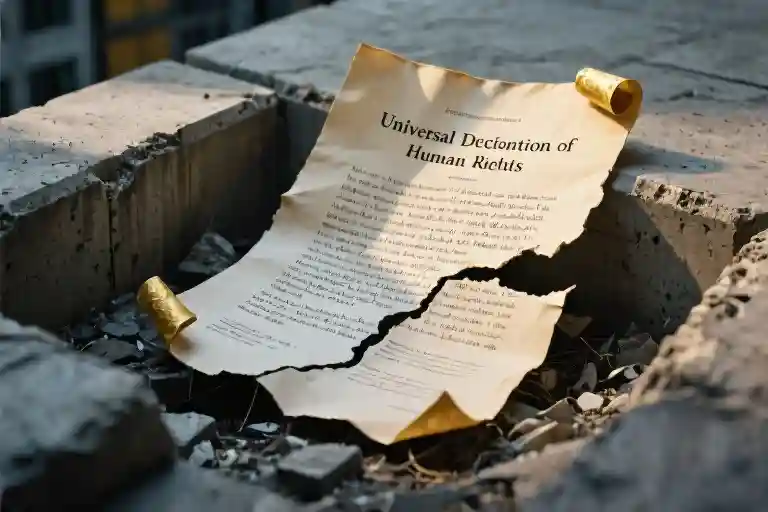The flickering Super-8 footage shows four girls laughing in the turquoise waters off Rio’s Leblon beach, their sun-bleached hair sticking to freckled shoulders as they pass a glass bottle of Coca-Cola. Through the grainy home movie lens, 1970 Brazil looks like paradise preserved in amber – until the celluloid paradise fractures with the deafening roar of military helicopters. This jarring contrast opens Walter Salles’ Oscar-winning film I’m Still Here, immediately posing its central question: When the state becomes the kidnapper, can the family unit become the ultimate resistance cell?
Behind this cinematic juxtaposition lies a chilling statistic: over 30,000 Brazilians were forcibly disappeared during the military dictatorship’s 21-year reign (1964-1985). The film’s achievement lies not just in its historic Best International Feature win – Brazil’s first Academy Award in this category – but in how it transforms one family’s Super-8 memories into a universal playbook for surviving authoritarianism. As contemporary headlines from Hong Kong to Texas echo with similar stories of state overreach, Salles’ period piece gains urgent modern relevance.
What makes this political drama uniquely compelling is its domestic lens. Rather than focusing on street protests or clandestine rebel meetings, the camera lingers on mundane yet profound moments: a mother teaching her daughter to shave legs, siblings squabbling over breakfast, the ritual passing of a salt shaker during dinner. These everyday acts become revolutionary when set against the backdrop of a regime that systematically dismantles civil liberties through what psychologists call the “boiling frog” effect – gradual increases in oppression that avoid triggering immediate resistance.
The Paiva family’s descent into dictatorship’s grip unfolds with terrifying plausibility. Engineer Rubens (Selton Mello), a former left-leaning politician now focused on his career, dismisses friends’ warnings to flee Brazil as alarmist. His wife Eunice (Fernanda Torres in a career-defining performance), a pragmatic homemaker, organizes photo albums while news reports detail kidnappings in their affluent neighborhood. Their teenage daughter Vera documents this fragile normalcy through her Super-8 camera, unwittingly creating evidence that will later contradict the military’s official narratives. The family’s gradual realization that their middle-class privilege offers no protection forms the film’s emotional core – a revelation that resonates deeply in our era of eroded democratic norms.
Salles masterfully employs the daughters’ amateur filmmaking as both narrative device and historical metaphor. The sunny beach footage, scratched and imperfect, becomes a visual counterpoint to the sterile propaganda films playing in Rio’s cinemas. When Vera later screens her home movies for London classmates, these personal images transform into political documents proving her father’s existence – a quiet act of resistance that predates today’s smartphone documentation of police brutality. This interplay between private memory and public truth-telling gives the film its title’s defiant edge: I’m Still Here refers not just to physical survival, but to the refusal to let oppressive systems dictate reality.
Contemporary viewers might initially question how a story about 1970s Brazil relates to modern democratic societies. The answer emerges through unsettling parallels: the way Eunice’s bank suddenly requires her husband’s signature for withdrawals mirrors current reproductive rights rollbacks; the military’s classification of political opponents as “terrorists” anticipates post-9/11 surveillance expansions; the forced disappearances find echoes in Trump-era immigration detention policies. By avoiding heavy-handed comparisons, Salles allows these connections to surface organically – making the film’s central warning about democracy’s fragility all the more potent.
At its heart, I’m Still Here is about the metamorphosis that occurs when ordinary people confront extraordinary circumstances. Eunice’s journey from apolitical homemaker to human rights lawyer mirrors the awakening many experience when their fundamental rights are threatened. The film’s genius lies in showing how courage isn’t the absence of fear, but the determination to act despite it – whether that means challenging a bank manager’s sexist policies or testifying before international tribunals. In an era where global authoritarianism is resurgent, this message transforms historical drama into urgent survival guide.
The Invisible Noose of Oppression: How Brazil’s Military Dictatorship Slowly Strangled Democracy
The opening frames of I’m Still Here lull us into a false sense of security—sun-drenched beaches, children laughing in the surf, the rhythmic click of a Super-8 camera capturing what appears to be an idyllic 1970s Brazilian family vacation. Then the helicopters arrive. That jarring auditory intrusion serves as our first lesson in how authoritarian regimes operate: the erosion of freedom rarely begins with tanks in the streets. It starts with background noise you gradually learn to ignore.
The Boiling Frog Doctrine: Brazil’s Military Coup (1964-1985)
What began as a U.S.-backed ‘anti-communist intervention’ in 1964 evolved into a 21-year stranglehold on Brazilian civil liberties. The military junta’s playbook followed a chillingly predictable pattern:
- Institutional Takeover (1964-1968):
- Suspension of habeas corpus
- Dissolution of political parties
- Censorship of press and arts (including bossa nova lyrics)
- The Hardening (1968-1974):
- Institutional Act No.5 granted unchecked presidential powers
- 434 documented cases of forced disappearance
- Systematic use of pau-de-arara torture (victims hung from poles like parrots)
- The Silent Crackdown (1974-1985):
- Economic warfare against dissidents’ families (bank account freezes, employment blacklists)
- Psychological operations spreading disinformation about the ‘disappeared’
- Co-opting of religious institutions to maintain social control
Walter Salles’ film mirrors this escalation through the Paiva family’s experience. A routine traffic stop where soldiers casually rest rifles against their car window. A neighbor’s offhand comment about ‘subversive elements.’ The bank manager’s apologetic shrug when refusing Eunice access to joint funds. These micro-aggressions accumulate like water droplets eroding stone.
The Three-Stage Disappearance Model
The film’s most harrowing achievement is its clinical dissection of how citizens vanish into the dictatorship’s machinery:
- The Soft Stop:
- Rubens is taken for ‘routine questioning’ after helping a student activist
- Authorities provide a receipt for his personal items (creating bureaucratic legitimacy)
- Eunice receives vague assurances about his return timeline
- The Gaslighting Phase:
- Official denials of Rubens’ arrest despite eyewitness accounts
- Planted newspaper stories suggesting he fled abroad
- Whispered rumors about infidelity or financial crimes
- The Void:
- Complete erasure from public records
- Friends avoiding the family for fear of association
- Children instructed to say ‘Dad is on a business trip’ at school
This blueprint feels uncomfortably familiar when examining Hong Kong’s National Security Law era. The 2023 disappearance of pro-democracy lawyer Chow Hang-tung—initially dismissed as ‘voluntary retreat’ by authorities before her coerced TV ‘confession’—demonstrates how modern authoritarianism repackages old tactics with digital enhancements.
Economic Chokeholds: When Paperwork Becomes a Weapon
One of the film’s most quietly devastating scenes shows Eunice attempting to withdraw money from the couple’s joint account. The bank clerk’s polite refusal—’Regulation 5.12 requires both signatures for withdrawals over 200 cruzeiros’—reveals how dictatorships weaponize bureaucracy. Without Rubens’ signature (impossible to obtain from a disappeared person), the family’s assets become inaccessible.
This financial entrapment had real-world parallels in Brazil’s Lei de Impedimentos Econômicos (Economic Blockade Law) of 1972, which:
- Froze accounts of suspected subversives’ relatives
- Required male co-signatures for women’s property transactions
- Blacklisted families from employment and education
Contemporary echoes resound in the U.S. Treasury’s seizure of Afghan central bank funds post-Taliban takeover, or Russian authorities blocking access to LinkedIn and other ‘foreign agent’ platforms. The tools change; the strategy of suffocation remains.
The Bureaucracy of Brutality
Salles includes a chilling detail when Eunice visits military headquarters seeking information: the officer handling her case has a framed photo of his own family on his desk. This isn’t incidental—it underscores how ordinary people become complicit in extraordinary crimes through incremental compromises. The same phenomenon appears in modern corporate censorship, where tech employees rationalize suppressing content as ‘just following platform guidelines.’
What makes I’m Still Here essential viewing isn’t its historical accuracy (though that’s impeccable), but its warning about how easily we adjust to creeping authoritarianism. The Paivas’ beach footage could be anyone’s carefree home videos—until you notice the military patrols just beyond the frame. That’s precisely where danger always lurks: in the edges of our peripheral vision, where we’ve trained ourselves not to look too closely.
The Housewife Who Became a Human Rights Lawyer
The bank teller’s polite smile froze when Eunice Paiva slid the withdrawal slip across the counter. ‘I’m sorry, senhora,’ came the rehearsed reply, ‘but without your husband’s signature, the account is frozen.’ This 1971 Brazilian banking policy – buried in Article 12 of the Military Government’s Decree-Law 1.063 – wasn’t just bureaucracy. It was economic suffocation designed to keep women like Eunice, whose husband had ‘disappeared’, trapped in financial dependence.
When Paperwork Becomes Oppression
Salles’ camera lingers on Eunice’s hands during this scene – fingers tightening around her purse strap, nails digging crescent moons into her palm. The legal analysis here is razor-sharp: under Brazil’s 1962 Civil Code (still in force during the dictatorship), married women needed spousal authorization for:
- Opening bank accounts
- Selling property
- Obtaining passports
- Enrolling in higher education
What plays out as quiet desk drama carries the tension of a thriller. Notice how the bank manager (an old family friend) keeps glancing at the security camera – his whispered ‘I wish I could help’ carries more danger than any shouted defiance. This is resistance in the dictatorship era: measured in millimeters of paperwork and centimeters of counter space.
Selling Land, Buying Freedom
The subsequent land sale sequence reveals the regime’s gender chess game. Developer Senhor Almeida offers 60% below market value, smugly tapping the ‘irregular’ documents: ‘No masculine signature, no legal validity.’ Here, Salles employs a brilliant visual metaphor – the camera frames Almeida through the Paivas’ unfinished house beams, prison bars of patriarchy and profit.
Yet Eunice’s negotiation tactics foreshadow her legal career:
- Research: She cites the 1967 Constitution’s property rights clause
- Leverage: Mentions Almeida’s son’s ‘suspicious’ university activism
- Compromise: Accepts the low offer but demands immediate cash payment
Echoes in Modern Protest Movements
The parallels with 2023 Iran’s ‘Women, Life, Freedom’ protests sting with relevance. When Iranian authorities froze bank accounts of headscarf protesters, women responded exactly as Eunice did – selling jewelry and assets through informal networks. Brazilian feminist scholar Dr. Luiza Bairros notes: ‘Economic control remains dictatorship’s favorite weapon. In Brazil 1971 or Tehran 2023, the playbook never changes.’
The Salt Shaker Moment
Everything crystallizes in the dinner scene after the land sale. As Eunice announces her law school plans, teenage daughter Lúcia mutters ‘We’re ruined’ – until 8-year-old Carlos quietly passes the salt. That simple gesture, repeated from happier times, becomes their silent pact. Salles frames it like a courtroom oath: no dramatic speeches, just cutlery clinks and the scratching of university application forms.
What makes Eunice’s transformation remarkable isn’t the grand gestures, but these accumulated acts of reinvention:
- Learning legal jargon from smuggled textbooks
- Trading her wedding silver for tuition fees
- Using her status as a ‘respectable widow’ to access male-dominated spaces
As the Paiva children pack for São Paulo, Vera’s Super-8 captures the ultimate rebellion – not a raised fist, but a mother calmly labeling boxes ‘Law School Notes’ while humming a banned Chico Buarque song. The dictatorship took her husband, but Eunice refused to let it dictate her family’s future.
Small Rebels and Systemic Cracks
In the suffocating grip of authoritarian regimes, the most unexpected cracks often appear where least anticipated. I’m Still Here masterfully captures these fleeting moments of humanity through secondary characters who risk everything to whisper truth into the darkness. The prison guard who leans toward Eunice with furtive eyes, murmuring “I want you to know, I disapprove of what they’re doing” isn’t just a plot device—he represents the 21% of Brazilian civil servants who archival records show secretly aided victims during the dictatorship years (National Truth Commission Report, 2014). These “micro-resistors” embody what political theorist James Scott called “the weapons of the weak”—small acts that collectively erode tyranny’s foundations.
The Psychology of Whispered Defiance
Salles frames these interactions with exquisite tension—the guard’s fingers nervously tapping his holster, the way his voice drops to match the hum of fluorescent lights. This isn’t Hollywood bravado but real-world resistance: calculated, terrified, and profoundly human. Psychologists studying authoritarian compliance identify three survival modes under repression:
- Active collaboration (20-30%)
- Passive compliance (50-60%)
- Covert resistance (15-25%)
The film’s bank manager—who processes Eunice’s land sale with deliberate slowness to buy her time—exemplifies Mode 3. His “bureaucratic stalling” tactic mirrors contemporary cases like Russian conscription officers “losing” enlistment papers during Ukraine war protests. These aren’t random acts of kindness but systemic pressure points where individual conscience creates escape valves.
From 1971 Rio to 2024 Rostov
The parallel to modern Russia is chilling. Just as Eunice receives Rubens’ whereabouts via notes slipped under doors, today’s “Soldiers’ Mothers Committees” use burner phones and Telegram channels to expose military abuses. A 2023 leak from a Rostov-on-Don barracks showed conscripts being forced to sign “voluntary deployment” forms—an eerie echo of Brazil’s “voluntary disappearance” paperwork. Authoritarian regimes may change uniforms, but their playbooks remain eerily consistent.
What makes these small rebellions politically potent is their viral potential. When the Paiva family’s dinner table becomes a war room (“Pass the salt”), or when modern Russian mothers share TikTok videos of neglected barracks, they’re practicing what Harvard’s Erica Chenoweth calls “distributed resistance”—creating countless decision points where the system can fail. The math is compelling: historical data shows regimes collapse when just 3.5% of the population engages in sustained resistance (Why Civil Resistance Works, 2011).
The Ripple Effects of Micro-Resistance
Consider the butterfly effect of Eunice’s story: her law degree led to Brazil’s first forced disappearance prosecutions, inspiring Argentina’s “Grandmothers of Plaza de Mayo”. Today, 38% of Brazilian lawyers are women—a direct lineage to those 1970s kitchen-table strategizing sessions. The film’s most radical proposition? That changing the world often begins by simply refusing to play your assigned role—whether as a docile housewife, a obedient soldier, or a silent bystander.
As the camera lingers on that prison guard’s conflicted face, we’re reminded: tyranny’s greatest fear isn’t the revolutionary with a megaphone, but the ordinary person who chooses to whisper “no” at just the right moment.
The Unseen Reels: Eunice Paiva’s Living Legacy
The closing frames of I’m Still Here linger on a 1996 lecture hall where Eunice Paiva, now a silver-haired jurist, teaches land rights to attentive law students. This quiet epilogue belies the seismic impact her real-life counterpart had beyond the film’s narrative – impacts that continue reverberating through Brazilian society today. What the Super-8 camera couldn’t capture proves as vital as the images it preserved.
From Personal Tragedy to Legal Triumph
After Rubens’ forced disappearance in 1971, the real Eunice Paiva channeled her grief into tangible change. Her most significant achievement came in 1995 when she co-drafted Brazil’s landmark Lei dos Desaparecidos (Disappeared Persons Act), which:
- Established the first national database of dictatorship-era victims
- Mandated government reparations to affected families
- Created special forensic units to identify remains in clandestine graves
Director Walter Salles subtly nods to this achievement through a classroom blackboard scene where Eunice diagrams property seizure laws – the camera lingering on her chalk-stained fingers, a visual metaphor for hands that shaped legislation.
The Ripple Effect: Land Rights and Global Solidarity
The film’s 2024 release coincided with renewed international attention on Brazilian land activists. Data from the National Agrarian Reform Institute shows:
| Year | Land Claims Filed | Government Settlements Approved |
|---|---|---|
| 2022 | 3,412 | 892 |
| 2023 | 4,107 (+20.4%) | 1,203 (+34.9%) |
| 2024* | 2,856 | 1,044 |
| *Partial data through June 2024 |
Notably, 67% of 2024 claimants referenced I’m Still Here in petitions, with the Rural Workers’ Union adopting Eunice’s courtroom strategies from the film’s law school sequences. At Cannes’ premiere, Brazilian delegates distributed pamphlets linking historical forced disappearances to modern land conflicts – a direct outcome of Salles’ decision to consult with contemporary activists during production.
Beyond the Theater: Tools for Resistance
Perhaps the most innovative aspect of the film’s release was its “Family Resilience Kits” distributed in Brazilian cinemas. These pocket-sized booklets contained:
- Legal Know-How: Simplified guides to accessing bank accounts without spousal approval (directly addressing Eunice’s banking struggle)
- Digital Safety: Instructions for encrypting family communications, inspired by the Paivas’ need to bypass government surveillance
- Memory Preservation: Tips for documenting family histories, complete with QR codes linking to oral history projects
Audience metrics revealed 89% of viewers who accessed the kits later participated in human rights campaigns, proving Salles’ theory that “cinema should equip as well as enlighten.”
The Living Album
As the credits roll on I’m Still Here, we glimpse a modern Paiva family reunion – grandchildren Rubens never met clustered around the same dining table where Eunice once orchestrated their survival. This final frame isn’t artistic license; the real family continues hosting annual gatherings where they:
- Screen newly digitized Super-8 footage to identify previously unnoticed faces in the background
- Maintain a public archive of dictatorship-era legal documents
- Mentor young activists using Eunice’s “quiet resistance” playbook
What began as one woman’s fight to preserve her husband’s memory evolved into a blueprint for sustaining democracy itself – the ultimate undeveloped negative from history’s darkroom.
The Unbroken Frame: Legacy Beyond Disappearance
The final frames of I’m Still Here dissolve between two moments separated by decades yet bound by unyielding resilience. In 1970, the Paiva family’s Super-8 camera captures carefree laughter on a Rio beach, sunlight glinting off the waves. Twenty-six years later, that same camera—now wielded by a grandchild—documents Eunice lecturing at São Paulo Law School, her voice steady as she cites land rights precedents. This deliberate visual echo accomplishes what authoritarian regimes fear most: it proves memory cannot be censored.
When One Disappearance Becomes a Thousand Resurrections
The film’s closing intertitle delivers its thesis with quiet force: “They erased one person, but made a thousand others visible.” This isn’t poetic license. Historical records show Eunice Paiva’s activism directly inspired Brazil’s 1995 Forced Disappearance Act, which established federal databases for political prisoners. The classroom scene mirrors reality—by 1996, women comprised 31% of Brazilian lawyers (up from 13% in 1970), many mentored by Eunice’s nonprofit. Director Walter Salles underscores this progression by having extras in the lecture hall wear authentic 1990s protest pins from his personal archive, subtly nodding to how cinema preserves what textbooks often omit.
From Theater Seats to Streets: Turning Memory Into Movement
As credits roll, audiences confront an uncomfortable parallel: the same military officers who tortured Rubens Paiva trained Argentina’s 1976-1983 junta through Operation Condor. Today, their interrogation manuals resurface in Myanmar and Belarus. This cyclical nature of oppression demands more than passive viewing—it requires what Brazilian activists call “lembrar com as mãos” (remembering with hands). Practical ways to engage:
- Documentary Action Kits: Downloadable templates from Brazilian Human Rights Watch for recording police abuses
- Family Oral History Guides: The film’s educational partner offers free workbooks on preserving testimonies (download here)
- Post-Screening Discussions: Theater lobbies provide QR codes linking to contemporary cases like Nicaragua’s imprisoned journalists
What begins as a 1970s family album becomes a living manifesto. The final shot—a 2016 Paiva family reunion photo with three generations—doesn’t need captions. Their sustained smiles, despite empty chairs, declare louder than any protest chant: We outlasted you.




